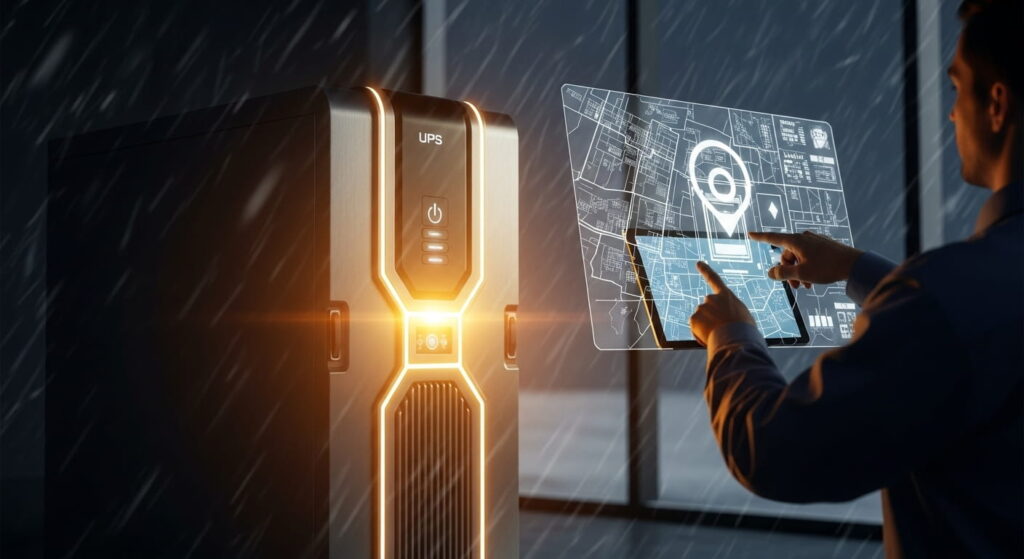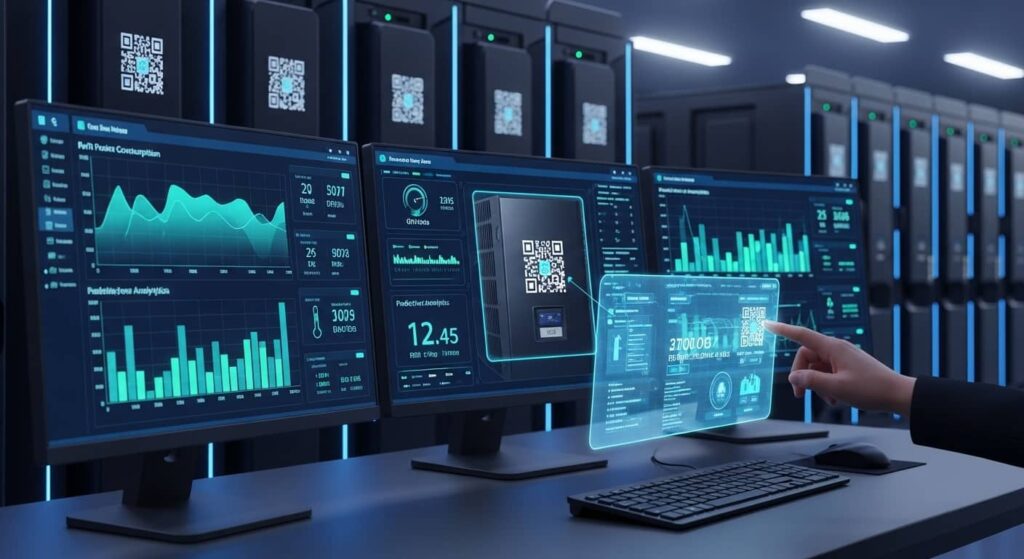Introduction
Power disruptions can lead to data loss, hardware damage, and operational downtime. In critical environments—whether data centers, industrial facilities, or even home offices—an uninterruptible power supply (UPS) is essential.
But in some situations, it’s not just about having a UPS; it’s about knowing how to locate it quickly during emergencies. That’s where the concept of “snowbreak locate uninterruptible power supply” comes into play.
In this article, we’ll explore what the term means, why locating a UPS quickly is important, best practices for placement, and how organizations can implement systems to find and maintain their UPS devices effectively.
What Does “Snowbreak Locate Uninterruptible Power Supply” Mean?

The phrase snowbreak locate uninterruptible power supply can be understood as a process or system designed to help you identify, locate, and access your UPS devices in critical situations—especially during unexpected power failures or emergencies.
- “Snowbreak”: Think of this as an analogy for sudden disruption, like a snowstorm breaking normal operations. In such events, your UPS is a lifeline.
- “Locate”: The emphasis is on finding and identifying UPS units quickly.
- “Uninterruptible Power Supply”: The hardware that provides emergency backup power when the main source fails.
In other words, it’s about ensuring visibility and accessibility of UPS systems in the moments when they matter most.
Why Is Locating a UPS Important?
Many businesses install UPS systems but fail to implement a plan to locate or manage them during critical times. Here’s why that’s a major oversight:
- Time-Sensitive Emergencies
During a blackout, every second counts. If you can’t immediately locate your UPS or confirm which systems are connected to it, you risk downtime or data corruption. - Large Infrastructure Challenges
In large facilities like hospitals, warehouses, or corporate offices, there may be multiple UPS units installed across different departments or rooms. Without a proper locate strategy, confusion is inevitable. - Maintenance & Battery Replacement
UPS batteries typically last 3–5 years. Knowing exactly where each UPS is located helps ensure timely inspections and replacements. - Disaster Preparedness
Whether due to snowstorms, earthquakes, or other natural events, locating and verifying UPS devices ensures mission-critical operations remain functional.
Where Should You Place a UPS?
A major part of being able to snowbreak locate uninterruptible power supply involves choosing the right place for installation. Here are the best practices:
1. Close to Critical Equipment
- Install UPS systems as close as possible to the devices they support.
- This reduces wiring complexity and makes identification easier.
2. Accessible Yet Secure
- Keep UPS units in areas that are easy to access for maintenance but secure from unauthorized tampering.
- Avoid locking them away without proper access planning.
3. Proper Environmental Conditions
- UPS devices should be stored in areas with proper ventilation.
- Avoid excessive humidity, heat, or dust, as these can shorten battery life.
4. Label and Map the Locations
- Clearly label each UPS and maintain a physical or digital map of where each unit is located.
- This documentation should be part of your emergency protocol.
How to Implement a UPS Location Strategy

To effectively snowbreak locate uninterruptible power supply devices, organizations should develop a clear UPS location and tracking strategy.
Step 1: Inventory All UPS Units
- Create a database of all UPS systems, including:
- Serial numbers
- Location
- Connected equipment
- Battery replacement schedule
Step 2: Map Physical Locations
- Use floor plans to map where each UPS is installed.
- Keep copies accessible both digitally and physically.
Step 3: Implement a Labeling System
- Number or color-code each UPS unit.
- Attach visible labels that identify its purpose and connected devices.
Step 4: Train Personnel
- Conduct regular drills and training sessions so employees know where UPS units are and how to operate them.
Step 5: Remote Monitoring
- Invest in network-enabled UPS systems that allow you to locate and monitor them remotely via dashboards or mobile apps.
UPS Location Challenges in Large Facilities
While the process seems simple, certain challenges can make it difficult to snowbreak locate uninterruptible power supply devices quickly:
- Multiple Floors and Departments:
Facilities with several levels and rooms require an organized mapping system. - Unlabeled or Hidden Installations:
Some UPS units may be installed behind walls or inside cabinets, making them harder to find. - Lack of Maintenance Logs:
Without proper documentation, staff may not know the exact location of each unit.
Solving these challenges requires a mix of technology, documentation, and training.
Technology for Locating UPS Systems

Modern technology can make locating a UPS easier:
- RFID Tags or QR Codes
- Attach QR codes to each UPS unit that link to its documentation and location.
- Use RFID scanning for larger facilities.
- Centralized Monitoring Software
- Many enterprise UPS solutions come with monitoring tools that allow real-time location and status tracking.
- IoT-Enabled UPS Devices
- Internet of Things (IoT) integrations enable remote visibility and alerts when UPS units are activated.
Real-World Examples
To better understand how organizations implement snowbreak locate uninterruptible power supply strategies, let’s look at some scenarios:
Data Centers
- Challenge: Hundreds of UPS units across multiple server rooms.
- Solution: Digital mapping, IoT monitoring, and remote access ensure quick response.
Hospitals
- Challenge: Critical equipment in multiple wings requires UPS backup.
- Solution: Color-coded labeling and centralized dashboards help maintenance staff locate UPS devices during power outages.
Manufacturing Plants
- Challenge: UPS units distributed across a vast factory floor.
- Solution: RFID tagging and employee drills improve response time.
UPS Maintenance: A Key Part of Location Strategy
Knowing where your UPS units are is one thing; maintaining them is another. Battery failures account for the majority of UPS-related outages.
To prevent this:
- Schedule regular inspections and battery tests.
- Keep maintenance logs tied to each UPS location.
- Replace batteries every 3–5 years or as recommended by the manufacturer.
Key Features to Look for in a UPS for Easier Location

If you’re purchasing new UPS devices, consider these features that make them easier to manage and locate:
- LCD Panels with Location IDs
- Network Management Cards for Remote Tracking
- Audible Alarms for Quick Identification During Emergencies
- Compact, Wall-Mountable Designs for Space Efficiency
Best Practices for Locating and Managing UPS Devices
To summarize, here are the top best practices for implementing a successful snowbreak locate uninterruptible power supply plan:
- Document and Map Every UPS Device.
- Use Labels, QR Codes, or RFID for Easy Identification.
- Train Employees on Location and Operation.
- Use Remote Monitoring Tools for Instant Visibility.
- Integrate UPS Location into Disaster Recovery Plans.
The Business Value of a UPS Location Strategy
Having a clear UPS location plan provides measurable benefits:
- Reduced Downtime: Quick response minimizes outages.
- Improved Compliance: Many industries require documented UPS location and maintenance.
- Lower Costs: Preventing power-related failures saves money on repairs and data recovery.
Conclusion
The concept of “snowbreak locate uninterruptible power supply” is all about being prepared. It’s not enough to own a UPS—you need a plan to locate and manage it effectively, especially when emergencies strike. By mapping locations, implementing monitoring technology, and training staff, businesses and individuals can ensure their critical systems stay online when they’re needed the most.
A well-executed UPS location strategy can mean the difference between seamless continuity and catastrophic downtime. Whether you’re managing a single home office UPS or hundreds of units across an enterprise, take the time today to map, label, and maintain your UPS systems—before the next “snowbreak” moment occurs.
